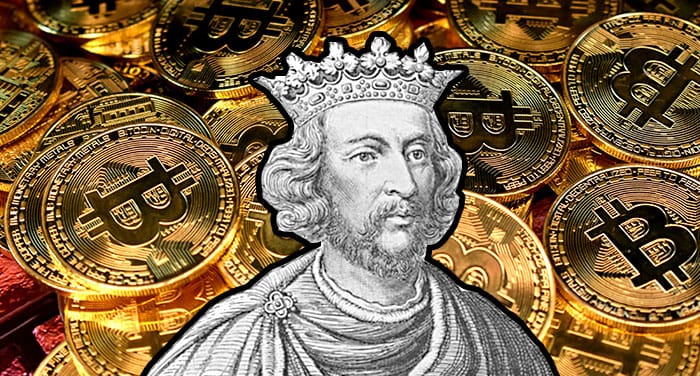Future magic circle trainee William Holmes compares medieval and blockchain communities

In 1255, King Henry III authorised a writ stating that “villages and communities of villeins [tenant farmers] […] ought to be able to prosecute their pleas and complaints in our courts”. The writ was the Crown’s attempt to fill a void in its legal authority that had emerged as medieval communities increasingly acted as independent entities in the eyes of local law. Hundreds of years later, blockchain technology has created a similar legal void between the state and decentralised communities.
Thus far, this has remained largely unaddressed. Regulators, judges and legislators have primarily been concerned with the categorisation of digital tokens (like cryptocurrencies). However, it is decentralised communities — comprised of developers (individuals who build and propose changes to a blockchain), miners (individuals who validate changes to a blockchain) and a variety of other participants — rather than the tokens these communities use to finance their objectives, who determine what a blockchain does.
A handful of states have, however, begun to recognise decentralised organisations as legal entities. The most complete proposal is Malta’s Innovative Technology Arrangements and Services Act which allows decentralised organisations to obtain legal recognition by registering with a regulator. But, like King Henry III’s writ, legislative attempts by a state to remedy the lack of control it has over a community quickly become obsolete and meaningless. Such measures fail to establish a more flexible legal principle that can extend the rule of law to any decentralised community, regardless of whether it admits it is a corporation or not.
Concession and “real entity” theory
There is a good reason why we have thus far failed to establish such a principle. Our current notion of corporate legal personhood can only understand a corporation in relation to the state; a group must have legal personhood bestowed upon it by the state. Unsurprisingly, this tradition, known as concession theory, has failed to acknowledge the fact that blockchain communities can act like autonomous legal entities, regardless of whether they are recognised by the state or not. The consequence of concession theory is that certain groups are, by default, ignored by the law until the legal ramifications are so great that the state is forced to take action.
A more suitable approach for blockchain communities is the solution developed by medieval societies in the 12th and 13th centuries, known as “real entity” theory. As Otto von Gierke points out, in medieval times, the functional and social existence of a group was sufficient for it to be treated as a corporate legal person. A corporation was “a living organism and a real person, with body and members and a will of its own […] it wills and acts by the men who are its organs as a man wills and acts by brain, mouth and hand”.
In light of this, although King Henry III’s 1255 writ conceding legal status to medieval English communities appears to vindicate concession theory, quite the opposite is true. Henry’s writ was merely a formality; these medieval communities had already been functioning as legal entities since the end of the 12th century. From at least 1199, there is evidence of villages, towns, parishes and guilds entering into contracts, assuming liabilities and resolving disputes in court as groups. Shared cultures and identities allowed these groups to so readily become “communities at law”: they were real social organisms. And the Crown, which had little control over these communities’ affairs, was all too happy to accept their legal independence (provided that they paid their taxes and didn’t seriously challenge the authority of the state).
Want to write for the Legal Cheek Journal?
Find out moreBooze and the badger dance
I would argue that blockchain communities can be considered real social organisms, akin to medieval communities. Owing to its decentralised design, community is inherent to blockchain’s characteristics. A single individual cannot run a blockchain on their own, but is forced to rely on others. Interestingly, recent research comparing the levels of Bitcoin penetration in different countries found that the higher the nation’s individualism, the lower the Bitcoin penetration. This implies that communal ideology (as opposed to individualism) is a core feature of these groups’ identities and functions.
There are also some more obvious indicators. Medieval guilds, for example, famously manifested their shared culture and identity in elaborate oaths of fraternity, debauched feasts and boozy initiations that were used to form strong social bonds between members. Similar traditions can be found in blockchain communities. The Ethereum community, for example, can be identified by their famous badger dance (here performed by the community’s creator Vitalik Buterin). As one member of the Ethereum blockchain community explained, “I think the dancing in itself speaks so much about Ethereum’s cultural values related to freedom, creative expression, fun, unconventionality, and even the desire for collective unity to some extent.”
A world of neighbours
Given that decentralised communities appear to meet the standard required for “real entity” theory to function, the flexibility offered by “real entity” theory would fill the legal void surrounding decentralised communities, as it did in medieval societies. But, should this medieval legal practice be applied to blockchains? And what are its limitations?
First, we should question how these communities regulate internal members’ relations. Both medieval and blockchain communities used a combination of mutual dependence and dispute resolution mechanisms to achieve this. Scholars, such as Barbara Hanawalt, have described medieval peasant villages as “a world of neighbours” in which durable relationships and mutual dependence induced cooperation amongst members in most cases. If cooperation broke down, many groups had their own tribunals that varied from community to community in order to resolve disputes.
Similarly, developers and miners are incentivised to cooperate by game theory mechanisms (the risk of a hard fork and the benefits of building a network with a large community) and the shared culture and identity described above. Furthermore, some systems have also developed dispute resolution mechanisms. For example, the Graph protocol allows members to submit disputes that are either satisfactorily resolved on-chain or are decided by an arbitrator who is part of the community. The effectiveness of these mechanisms is a test of these communities; the break-down of a group’s social cohesiveness would make “real-entity” theory ineffective and require the state to step in. So, whilst groups are capable of internal regulation, there is always a risk some communities will break down, to the detriment of its members.
Second, we should question the effectiveness of the systems of group representation. Like modern corporations, medieval communities used representatives. A key difference, however, was that there was little concern over who was chosen and whether the procedure was fair and democratic. So cohesive were many medieval communities, it appears that it was a member’s obligation to speak for the group. This meant that a group’s leading men (on the grounds of their expertise or status) would act as representatives, no questions asked. The emphasis was less on procedure and more on the substance of the matter. Blockchains, on the other hand, are designed for democracy. This does not mean, however, that leading figures in the community might not be called upon to represent the community. Therefore, it appears (depending on the norms of the community) that establishing legitimate representatives is possible, but will again test the community’s strength and electoral preferences.
Decentralised communities at first seem to present the state with an alien and irreconcilable issue. But, some reflection on the medieval “communities at law” demonstrates how a more localised system can function. It would, therefore, be fair to assume that a regulatory response to blockchain technology might well have come more naturally to Henry III than today’s heads of states. It remains to be seen whether our more individualistic societies can find a satisfactory mechanism for regulating the community culture that has been reborn by decentralised technology.
William Holmes is a penultimate year student at the University of Bristol studying French, Spanish and Italian. He has a training contract offer with a magic circle law firm.



Please bear in mind that the authors of many Legal Cheek Journal pieces are at the beginning of their career. We'd be grateful if you could keep your comments constructive.